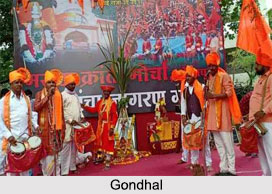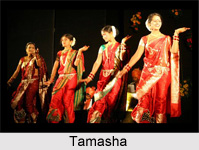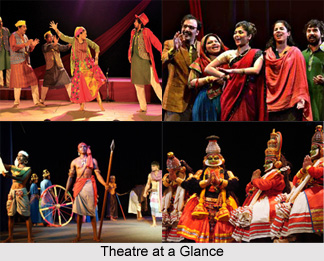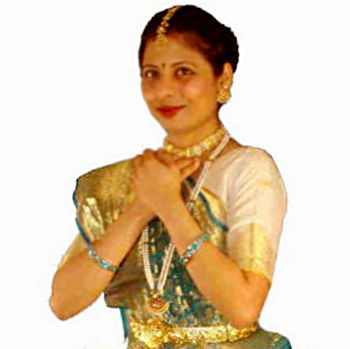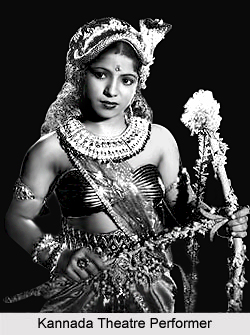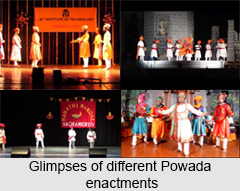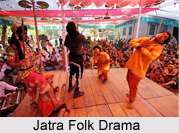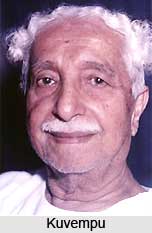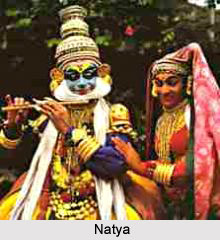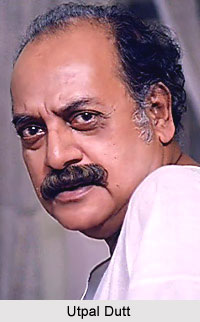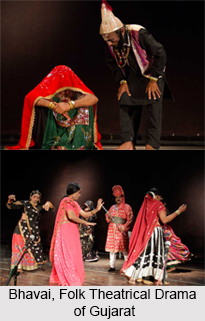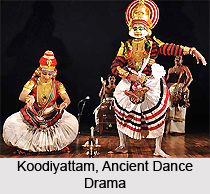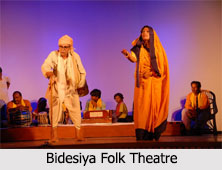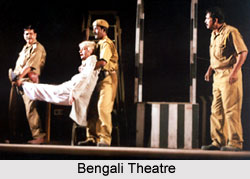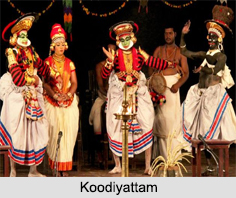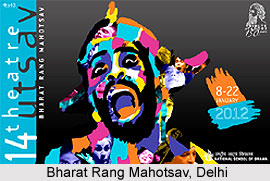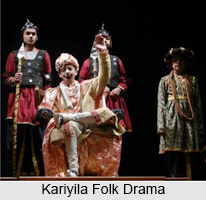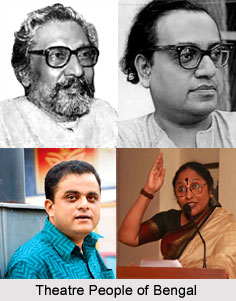Injunctions have been laid down by Indian dramaturgic thesis, to be observed on the stage of the Sanskrit plays. The main purpose of the rules and regulations were to maintain an idealistic atmosphere on the stage. Propriety and etiquette were emphasised. A number of other important and far-reaching restrictions were imposed to ensure a romantic ambiance on stage.
Restrictions in Sanskrit Drama
Presentation of grim realism was forbidden because that would not exalt the mind. Painful, disgusting and demeaning scenes were also to be avoided. Prohibitions were also applicable for the presentation of long journeys, murders, fights, revolts in kingdoms, sieges, eating, bathing, kissing and embracing. The older dramatists though enjoyed greater freedom. For instance, in Bhasa`s Urubhanga, Duryodhana dies on the stage. Even in the play Mricchakatika, Vasantasena is strangled by Sakara. The injunctions in Indian theatre came into vogue in later times. The Sanskrit drama is not totally devoid of tragedy. It excludes the direct depiction of death as an incident and insists on a happy ending. It recognises some form of tragedy in its pathetic sentiment (karuna rasa) and love in separation (vipralamha sringara); the tragic element is almost essential in some plays. For example in the plays like the Mricchakatika and the Abhijnanasakuntalam, the tragedy occurs at the beginning of the play and not in the end. In the Uttararamacarita, the tragic aspect prevails throughout the play but occurs in an intensive form at the beginning. Thus the primary characteristic attribute of Sanskrit plays is the total absence of the distinction between tragedy and comedy. It is a mixed work of art in which joy and sorrow, contentment and misery, seriousness and flippancy are mixed, and in which good and evil, right and wrong, truth and deception are blended. But towards the end harmony is always restored and order succeeds disorder, and the mind of the spectator is made serene by the blissful termination of the story.
Inner Acts in Sanskrit Drama
Only sweet and dignified sentiments and emotions are to be presented on the stage.
Things that are not to be represented on the stage and events that extend over a long time are to be related in inter acts called arthopaksepakas. There are five kinds of inner acts, namely, viskambhaka, pravesaka, culika, ankavatara and ankamukha. The viskambhaka relates, at the commencement of an act, events which are happening or which have happened. When a longer interval has elapsed between two acts or important events have happened, the new act is introduced with a viskambhaka. According to the Natyashastra, the viskambhaka should be introduced in the first of the five joints (sandhi). This practice is not always followed in dramas as it depends on the kind of characters appearing on the stage. These are either the people of the middle class, in which case the viskambhaka is called pure (suddha) and is in Sanskrit language, or people of a lower status in the mixed viskambhaka (sankirna) with Prakrita as the language. The pravesaka is related to the nataka and the prakarana is to occupy a place between two acts. It should not consist of the exploits of the superior and the middling characters and there should be no lofty speech in it. Its language should be Prakrita. Culika deals with the voices behind the curtain. The ankavatara comes between two acts or within an act and ankamukha as Bharata explains is a preceding allusion to the beginning of an act. The Dasarupa calls it ankasya and explains it as an announcement of the beginning of an act at the close of the preceding one when the matter of the following act is not an immediate continuation of the earlier one. According to the Sahityadarpana, some authorities take it as an ankavatara and explain ankamukha as an illusion to the entire following contents of a piece inside an act.
Speech in Sanskrit Drama
As per the dramatic rules (natyadharma), some parts of the matter in hand are to be heard by all persons present on the stage while other parts are not expected to be so heard. The former is known as `aloud` (prakasa) and the later `aside` (svagata). An `aside` is also known as atmagata. These adverbial forms atmagata and svagata occur frequently in stage directions. The personal addresses are known as jananta or janantika and that which is spoken in confidence is called apavarita. Personal address is reciprocated conversation in the presence of other persons who are excluded with a gesticulation by the hand with three fingers raised (tripataka). A confidential dialogue (apavarita) is a secret shared by a person turning round to another and is meant to be heard only by the person addressed. An imaginary conversation called the akasabhasita is a device which is frequently employed in a monologue play.
Nomenclature in Sanskrit Drama
According to the Natyashastra, there are a set of words which are used for addressing different characters with respect to their position. Gods, great sages, persons well versed in different Vedas and priests were called by men and women alike as `bhagavan` (holy one). Kings were called by Brahmanas at their pleasure by their names. A Brahmana was usually addressed as `drya` (noble one); a King `maharaja` (great king); a teacher, acarya (professor); and an old person, `tata` (father). A minister was called `amatya` (councilor) or `saciva` (minister by a Brahmana and `drya` (sir) by others. Persons of equal status were called by their names. The lord of a chariot was addressed by the charioteer as `ayusman` (long-lived one) and an ascetic, `sadha` (blessed one). A pupil or a son was called as vatsa (child), putraka (son), `tata` (a term of endearment) or by the name of his gotra by father or preceptor. A king was hailed as `deva` (lord) by servants and people in general and as `bhatta` (Prakrita form of bharta) which means sire, by members of his harem and `rajan` by sages. The vidusaka was called vayasya (friend) by the king. A husband was addressed as `aryaputra` (noble one`s son) by his wife in her youth. Wives of king were called `bhattini` (mistress), `svamini`, (madam) and `devi` (lady) by members of the harem according to their status. These nomenclatures were faithfully followed in Sanskrit plays.
Division of Acts in Sanskrit Drama
Most of the Sanskrit plays are lengthy in nature for example, Balaramayana by Rajeskhara. Thus Sanskrit dramas are divided into acts. The common word for an act is anka; only in the sub-class, sattaka, the act is called javanikantara. The number of acts varies according to the kind of drama. In the principal classes there are at least five and at the most ten acts. In each act the hero must come into sight, and the number of persons present on the stage should not be too many and at the most three or four. This number was, however, often exceeded. A subject dealt with in one act should not extend over more than one day. Different matters may be pressed together in one act and all the characters should leave the stage at the completion of an act.
Unity of Time, Place and Action
In the Sanskrit dramas, the successful portrayal of sentiments is of great significance and does not insist on quick movements of actions. According to the ancient rhetoricians, a dramatist should set before him the creation of sentiment as his chief object. Apart from the major plot, the development of the subsidiary incidents and situations are also welcomed by the Sanskrit critics. The unity of action was to be maintained. Though the unity of time was ignored both in theory and practice, but so far as the drama as a whole was concerned, a sense of dramatic decorum demanded that an act should be arranged with a single intention exemplified by the doings of a single day. But there are also acts between which many years may elapse, for instance in Abhijnanasakuntalam, Bharata`s growth from birth to boyhood is described, and also in the play Uttararamacarita, no less than twelve years pass between the first and second acts. Time may slide over twelve or sixteen years and the audience may learn of it from the chorus or a short dialogue. The unity of place is also not strictly observed. In an act the place is virtually the same except for small distances which are suggested by means of some vigorous movement on the stage. But change of locality sometimes occurs within the same act, as for example, when a journey through air in a celestial car is performed. Generally in the ensuing act, the scene may open at any other place, even in a celestial region. The concluding stages of a long journey are emblematically represented so that the audience travels and reaches the destination in its imagination and then stays for the act in that locality. The idea of the locality is often picturesquely suggested by means of delicate poetic metaphors. In plays such as the Ratnavali, where a royal conspiracy is presented, all the acts are confined to the several chambers or gardens of the palace itself. But such a constraint is voluntary on the part of the dramatist and is not made obligatory on him by the stern rules of dramaturgy.
Thus, injunctions are an important aspect of Sanskrit drama as it lays out the rules and regulations which in turn ensure a blissful dramatic spectacle.
